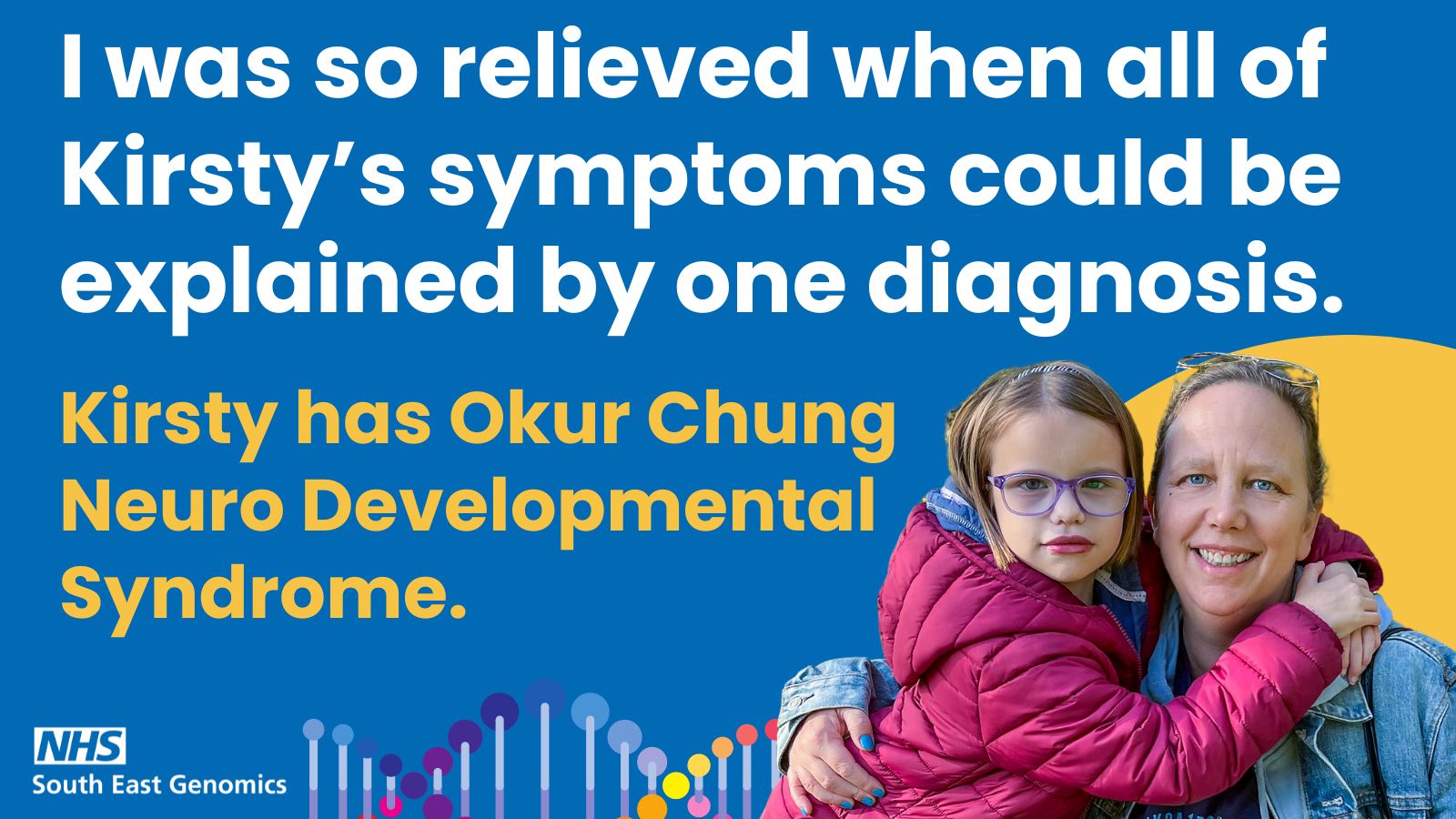
Kirsty was born seven weeks premature so it didn’t raise immediate alarm bells when she didn’t reach her developmental milestones, such as sitting up or smiling. She was small for her age, but it was easily explained because she’d had severe bronchiolitis when she was only a week old and spent several days in specialist baby care.
However, when she didn’t walk until she was two, and didn’t talk until she was three, her parents knew something wasn’t right.
“I knew something was wrong, but the health visitors told me it was just because she’d been premature and that she would catch up. But the longer it went on, the more she didn’t catch up.” Kirsty’s Mum Claire told us.
She was referred to a paediatrician who performed numerous tests but everything came back within normal limits. Eventually Kirsty was referred to a geneticist who immediately recognised signs of a genetic disorder.
“The geneticist instantly spotted that Kirsty has webbing between her toes and fingers, a wide bridge to her nose, low set thumbs and ears and a broad mouth.”
By chance their appointment was at the same time as a new national research study which looked to sequence the genomes of 100,000 people. Kirsty was submitted into the programme called The 100,000 Genomes Project.
“It took three years, but in 2019 we finally got a diagnosis for Kirsty. The results showed she has a rare genetic condition called Okur Chung Neuro Developmental Syndrome.”
So far only 25 people have been diagnosed with Okur Chung Neuro Developmental Syndrome (OCNDS) in the UK. This condition causes a range of symptoms including learning difficulties, autism, speech delay, epilepsy, cardiac abnormalities and short stature.
“My biggest fear had been that we would never find out what was wrong with Kirsty. I was so relieved that all of Kirsty’s seemingly unconnected symptoms could be explained by one diagnosis.”
Caused by a change to the CSNK2A1 gene on chromosome 20, it was only discovered in 2016 and so there is still little information known about it.
“When she was diagnosed, we were told to watch out for epilepsy and heart issues, but otherwise sent home with only Google for support.”
There is currently no cure or direct treatment and Claire manages Kirsty’s daily symptoms such as difficulty sleeping and anxiety. The diagnosis has helped Kirsty to get extra support at school and she is now in an autism unit for 80% of the school day.
“Right now, Kirsty is happy at school where she can spend most of her time in a small supportive autism unit. Her options for secondary school seem limited though and are becoming a real concern. There’s no support on offer.”
When Kirsty was first diagnosed, her Mum turned to the internet for support. It was there she discovered the CSNK2A1 Foundation, a charity which provides resources and support for individuals who have been diagnosed and families who have also been affected. Claire is now a member of the Parent Advisory Board and is their UK Ambassador supporting families who have also been recently diagnosed.
“The Foundation has been a huge support to me and my family. It’s helped us to connect with people who are dealing with the same daily reality as us.”
April 5th is International OCNDS Awareness Day. Claire is sharing her story today to help raise awareness and understanding of OCNDS. On the day, eighteen monuments will light up in the UK, USA and Canada to shine a light on OCNDS. Although only 250 people are known to have been diagnosed across the world, the prevalence rate is estimated at 1:100,000 and experts believe that there are over 10,000 children living with OCNDS. Claire wants to help more people get access to genetic testing so they too can get a definitive diagnosis.
